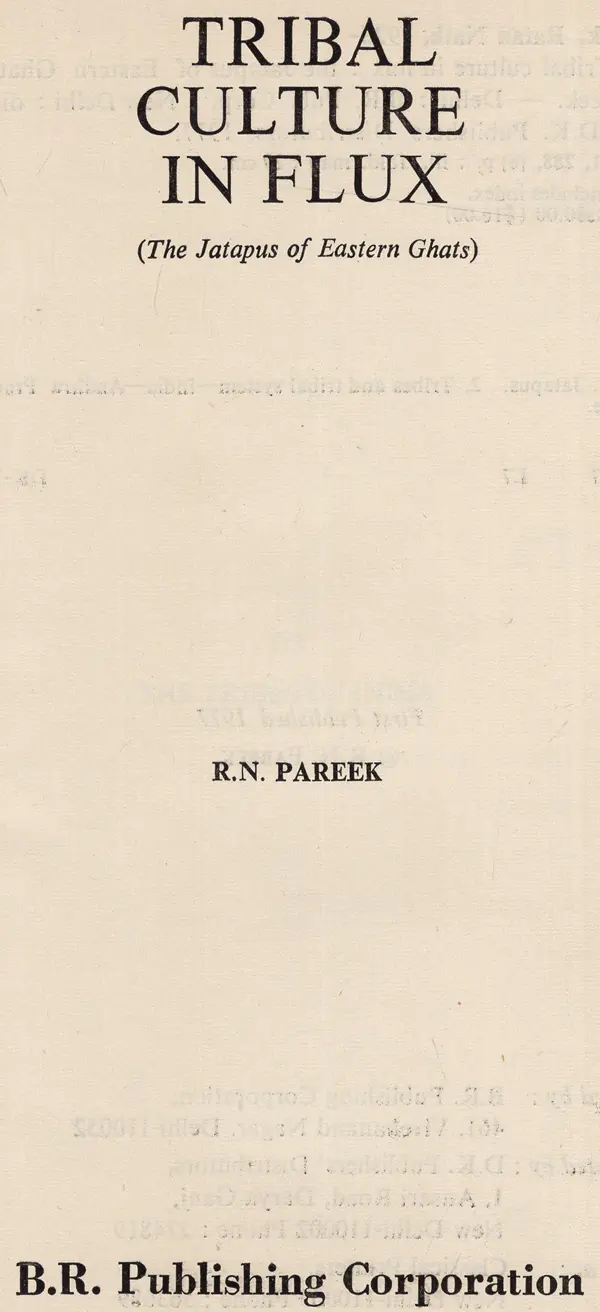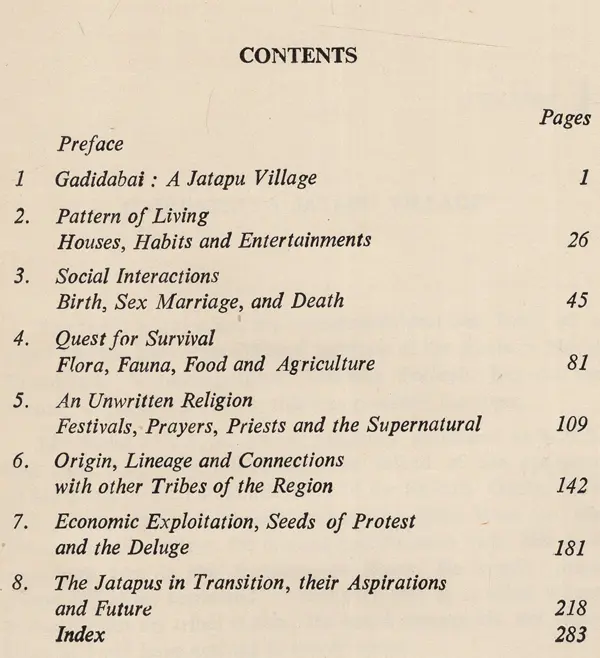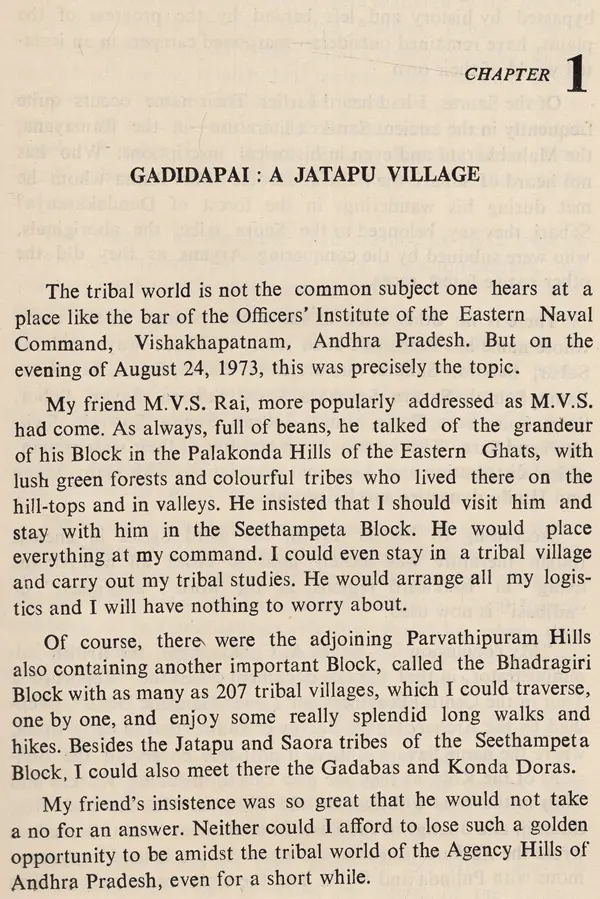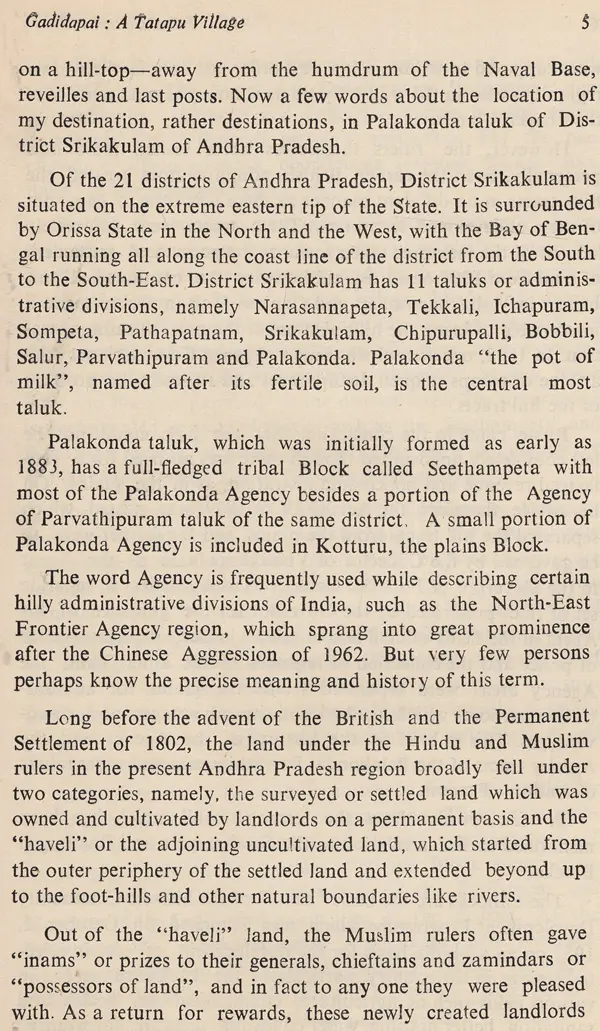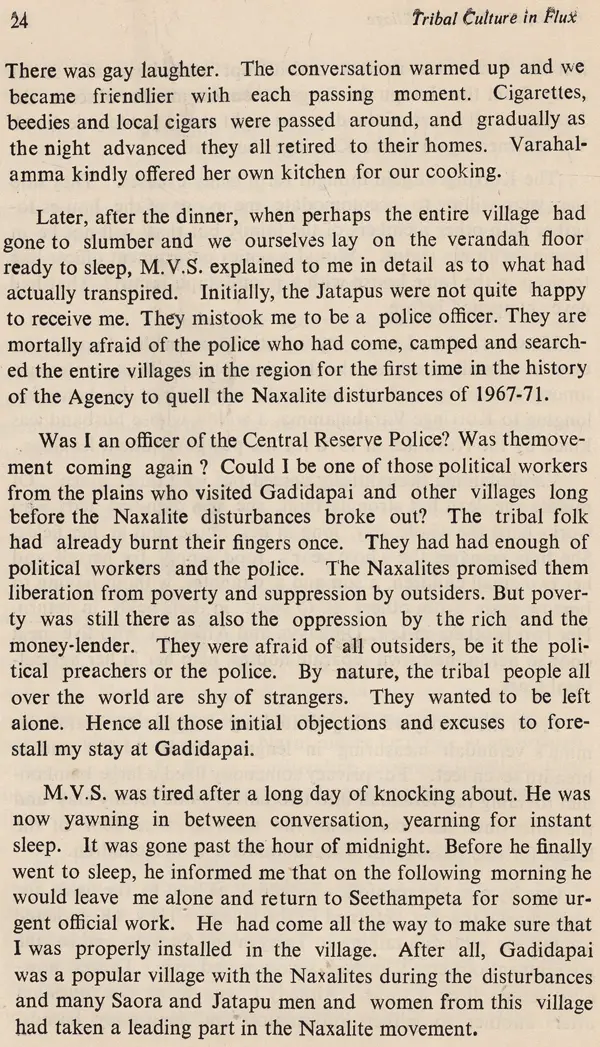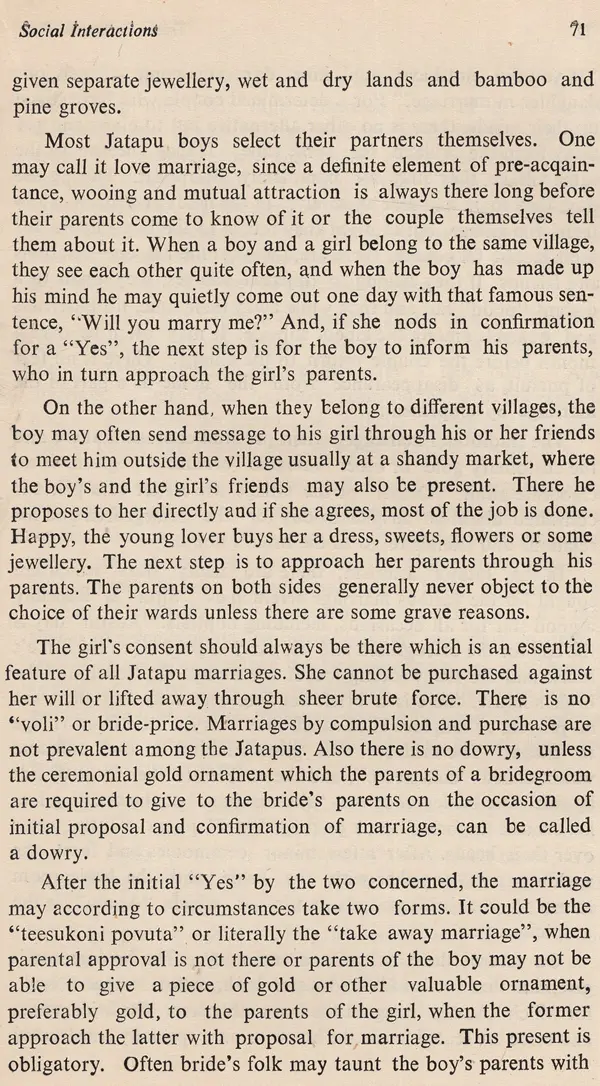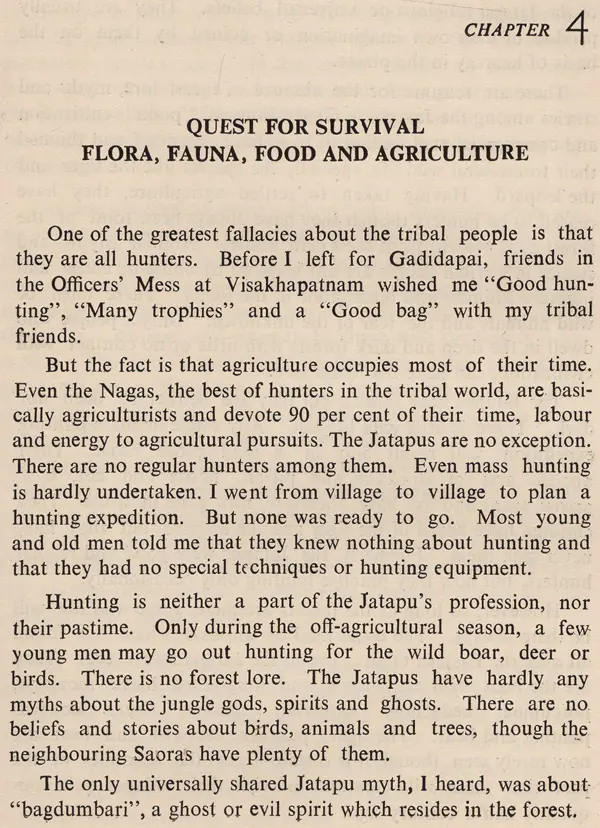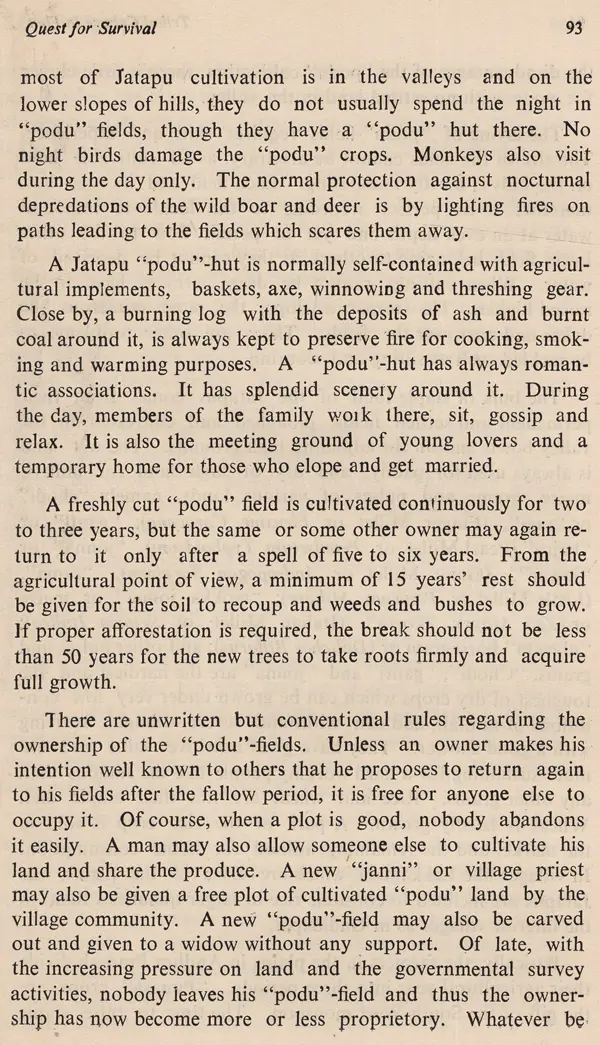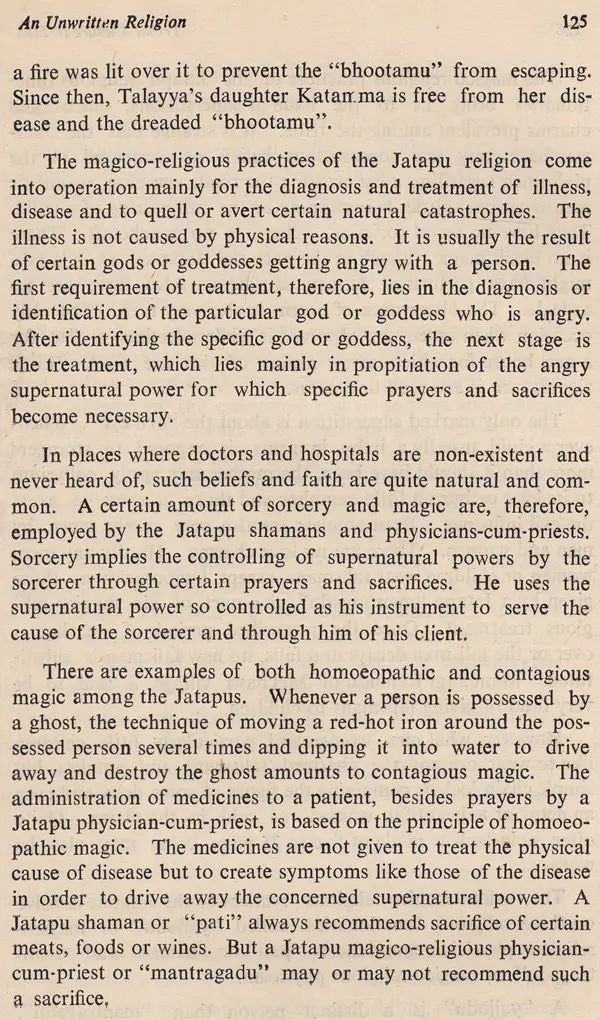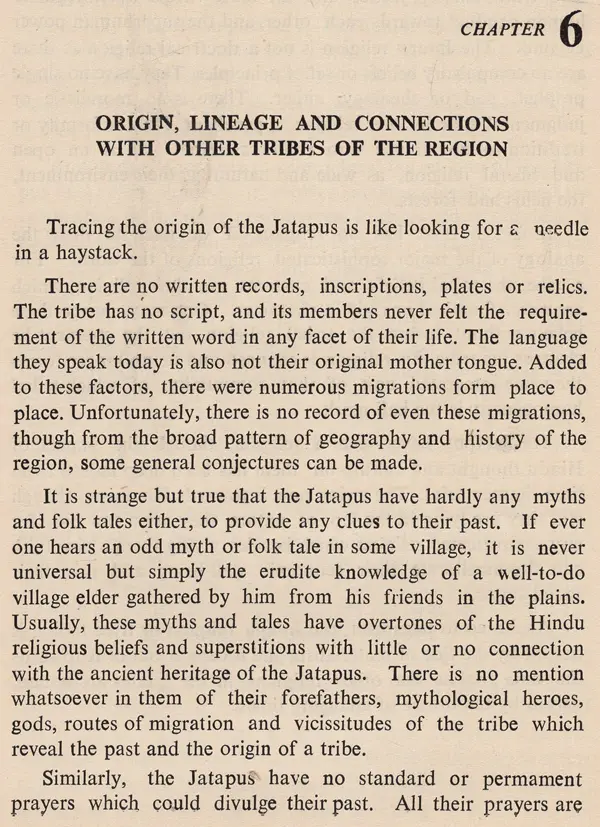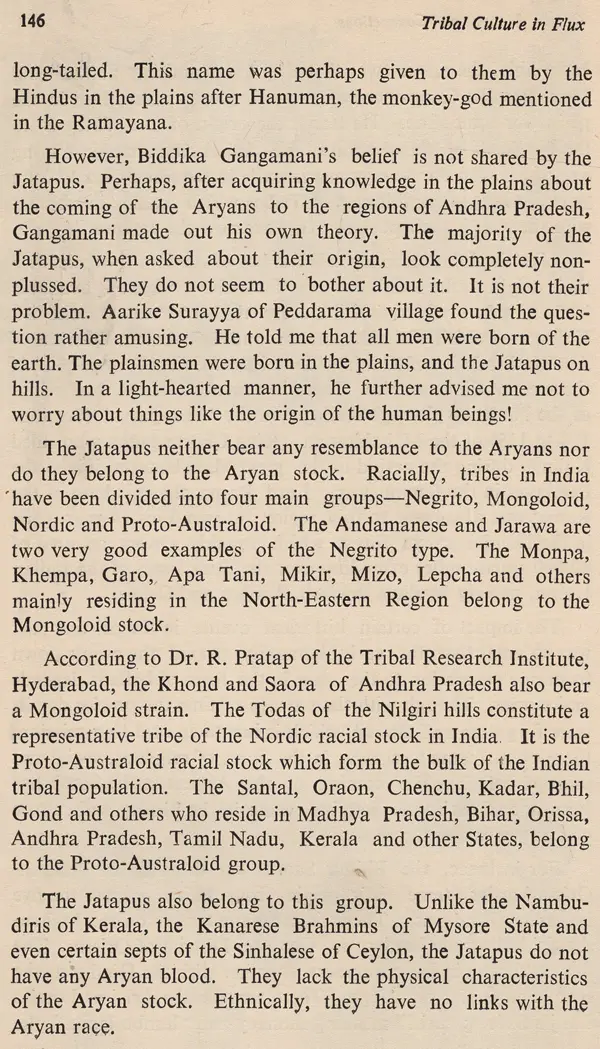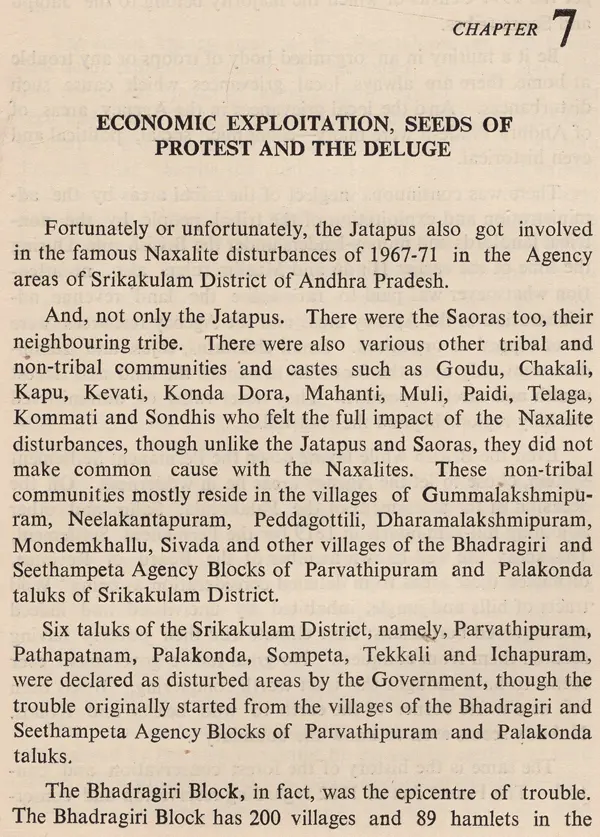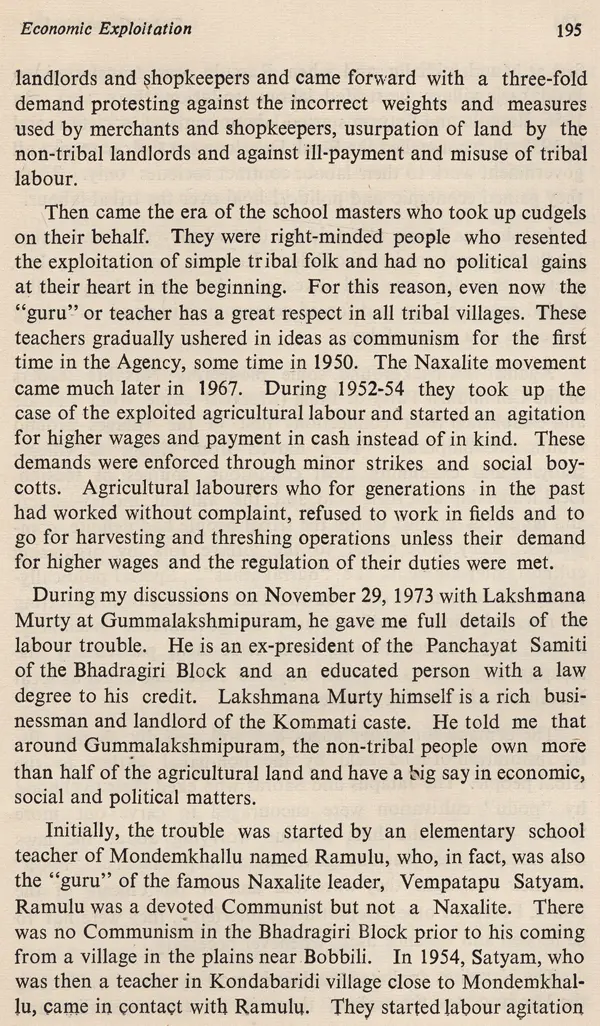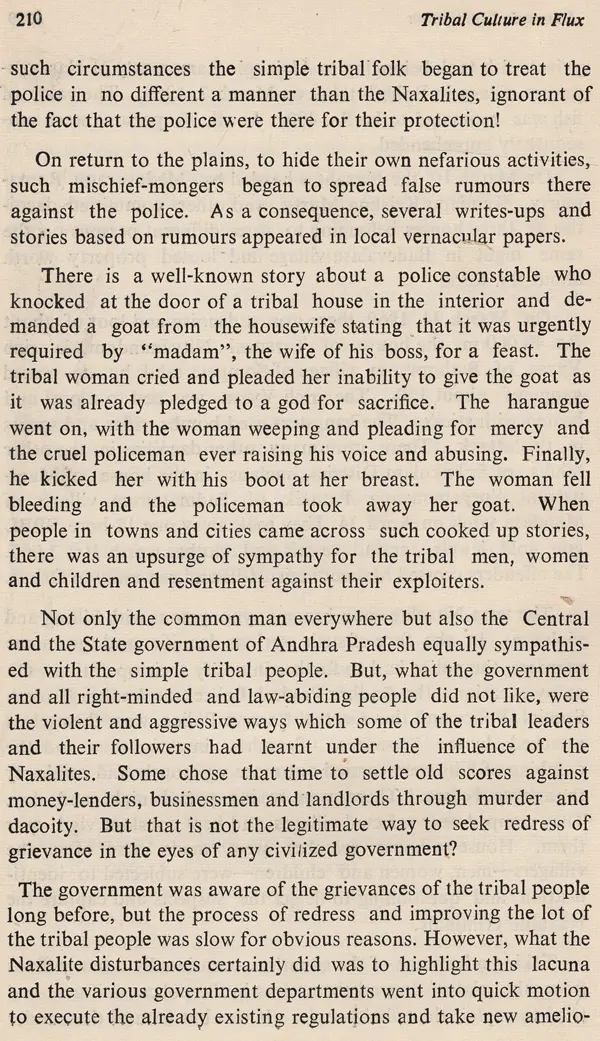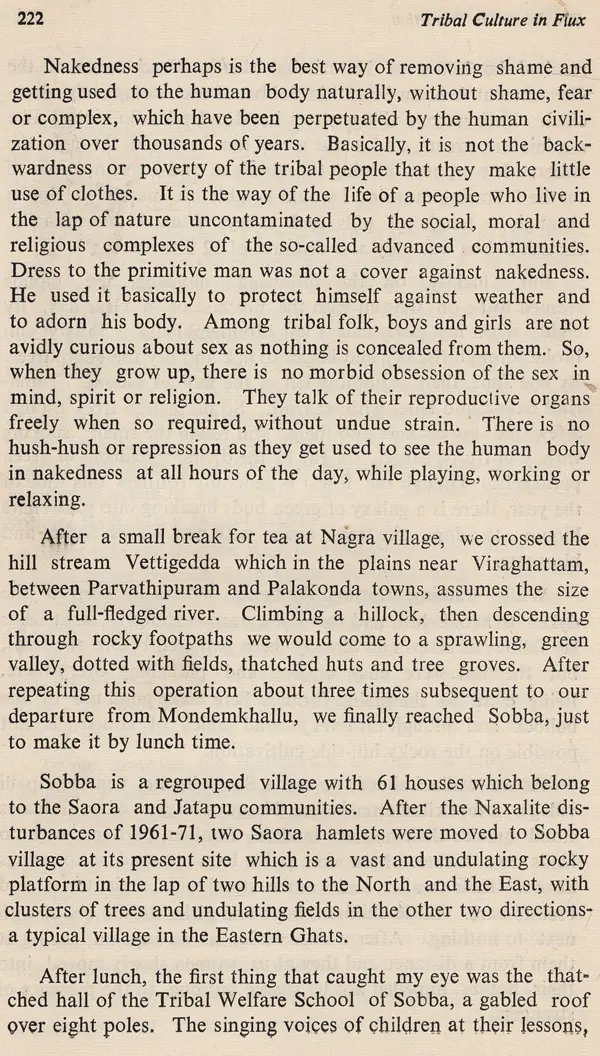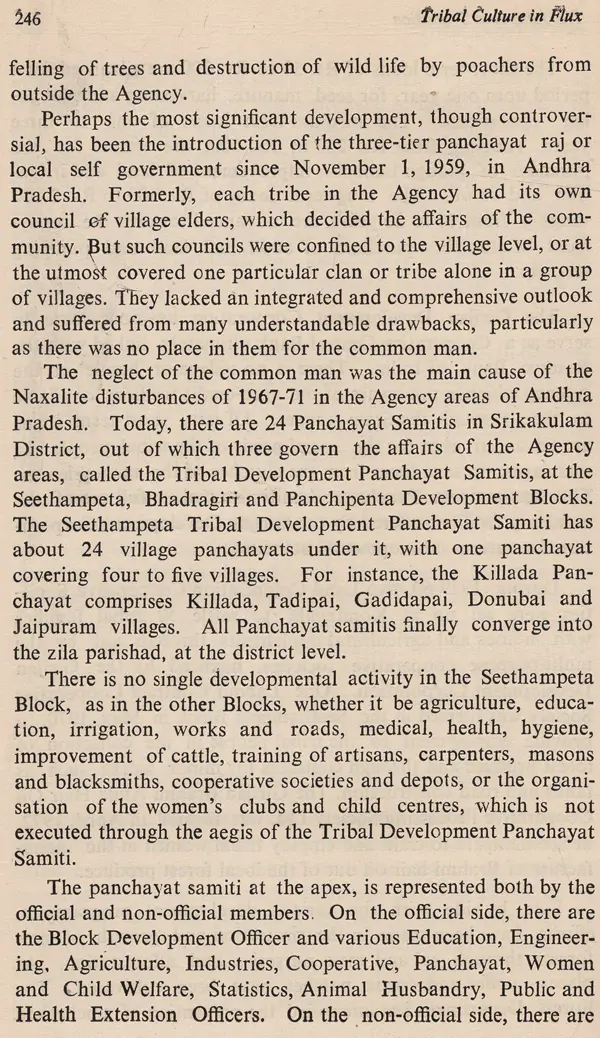
Tribal Culture in Flux (The Jatapus of Eastern Ghats An Old & Rare Book)
Book Specification
| Item Code: | UAS117 |
| Author: | R.N Pareek |
| Publisher: | B.R. Publishing Corporation |
| Language: | English |
| Edition: | 1977 |
| Pages: | 288 |
| Cover: | HARDCOVER |
| Other Details | 9.00 X 6.00 inch |
| Weight | 480 gm |
Book Description
The Jatapus of the Eastern Ghats of India, numbering about 1,25,000, who lived in complete isolation till the 1967-71 Naxalite disturbances in Andhra Pradesh, are in transition. This book is a faithful portrayal of an ancient tribal culture under change-with a kaleidoscopic depiction of the Jatapus' social, material, political and religious institutions; community, clan, toteism and family groups; property, house and household goods; personal habits and daily routine, cosmetics, clothes, orna ments and jewellery; customs relating to birth, death, sex, romance, marriage and divorce; hunting dancing and pastimes; fauna, flora, food and agriculture, market, trade and economy; gods, spirits, ancestor - worship, festivals, prayers, priests, shrines and the supernatural Some special features of research are the origin of the Jatapus covering over 25 neigh bouring tribes and a historical perspective of the region; analysis of the famous Naxalite movement in the Agency Hills; the problems of the tribes in transition and how to integrate them in the national stream. It is an excellent treatise which would be useful to the academicians, administrators in tribal areas, and of a general interest to common reader.
Captain R. N. Pareek, I.N., (1926) joined the Navy in 1950 and has since held important appointments ashore and afloat, includ ing posting abroad. He is deeply dedicated to the tribes and has carried out an intensive field-study of the tribes of India, particularly of those who reside in the Eastern Himalayas and Andhra Pradesh. He has been a regular contributor to some anthropological journals. His aim is now to devote himself to the service of the tribes on retirement as a field -worker and write a series of books on tribes in transition and how best to bring them to the mainstream of our civilization.
Nothing gives me greater pleasure in life than being with and knowing about the tribes. Having been acquainted with some tribes right from childhood, my true love for the tribal world deepened during my posting to the North-Eastern Region in October, 1962, when I came in contact with the Apa Tanis, Nishis, Miris, Tagins, Solungs, Bangrus, Gallongs and Mikirs of the Suban siri District of Arunachal, particularly the Apa Tanis. From then on, there has been no other passion for me but to be with, and to know about, the tribes. Regularly each year, I began to spend most of my annual leave in the North-Eastern Region. Later in April, 1968, when I again got a posting to Assam as the Principal, Sainik School, Goalpara, it brought me still closer to the tribes of Arunachal, Nagaland, Mizo Hills, Meghalaya and Assam-with their children right in my school campus. After the usual turnover in Naval service in April, 1972, when I was posted to the Headquarters, Eastern Naval Command, Vishakhapatnam, Andhra Pradesh, I decided to pick on a tribe of the great Eastern Ghats. And this time, my leave came to be spent in the Agency Hills of the Eastern Ghats, for the study of the Jatapus. Why the Jatapus? The Eastern Ghats contain a galaxy of tribes. There are Bagata, Gadaba, Goud, Kammara, Konda Dora, Konda Kapu, Khond, Kotia, Mali, Mukha Dora, Porja, Saora, Valmiki and many other tribes besides the Jatapus. I selected the Jatapus for several reasons. So far, no detailed study of them had been published. The Jatapus, though not the major, are a leading and influential tribe of the Eastern Ghats region of Andhra Pradesh. As a Service Officer can get only a limited period of time for his hobby of studying tribes, what better Blocks than Seethampeta and Bhadragiri could I have selected, which beside being purely tribal Blocks, were then under the charge of two old friends of mine-M.V.S. Rai in Seethampeta and his wife Shakuntala in the Bhadragiri Block! Through their kindness, I could roam about in both the Blocks, where the Jatapus reside, at my will and pleasure and stay and sleep wherever I liked, in a "podu" hut, under a tree or in open fields by the side of a hill-stream. I have really no words to express my gratitude to these two friends. I have no claims to scholarship in this book, on the Jata pus. I have written about them because I love the tribes. Now I love the Jatapus as a people, very close to me. And, if I have made any mistakes of facts in writing about them, I am sure, my Jatapu friends will forgive me. I can never forget their hospitality and kindness. The memory of my conversa tion and discussions with hundreds of men, women and children in the Jatapu villages spread over the hills and valleys of Srikakulam District, right up to the Orissa border, still lingers in my mind as a cherished possession. Besides personal observations, I also made full use of the various publications of the Andhra Pradesh Government for local statistics and records, namely, "The Gazetteer of Vishakhapatnam District, 1907" and "The Scheduled Tribes in Andhra Pradesh, 1963", published by the Director of Tribal Research Institute, Hyderabad. Further, the reading of the book "Religion of a Tribe" by the late Dr. Verrier Elwin on the Saoras also helped me in understanding the reli gion of the Jatapus better. In this book, I have also ventured to cover the Jatapus in transition and their aspirations, as well as the general problems of our tribes in brief and their solution. Since the completion of the draft of this book in early 1975, a revolutionary drive has already been made towards the betterment of the lot of the tribes.
**Contents and Sample Pages**
